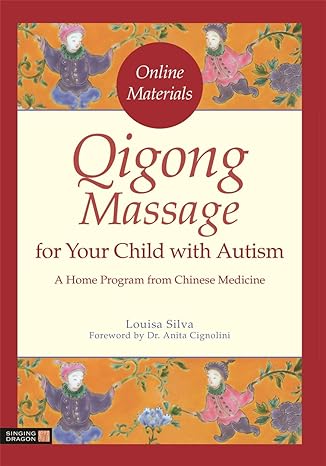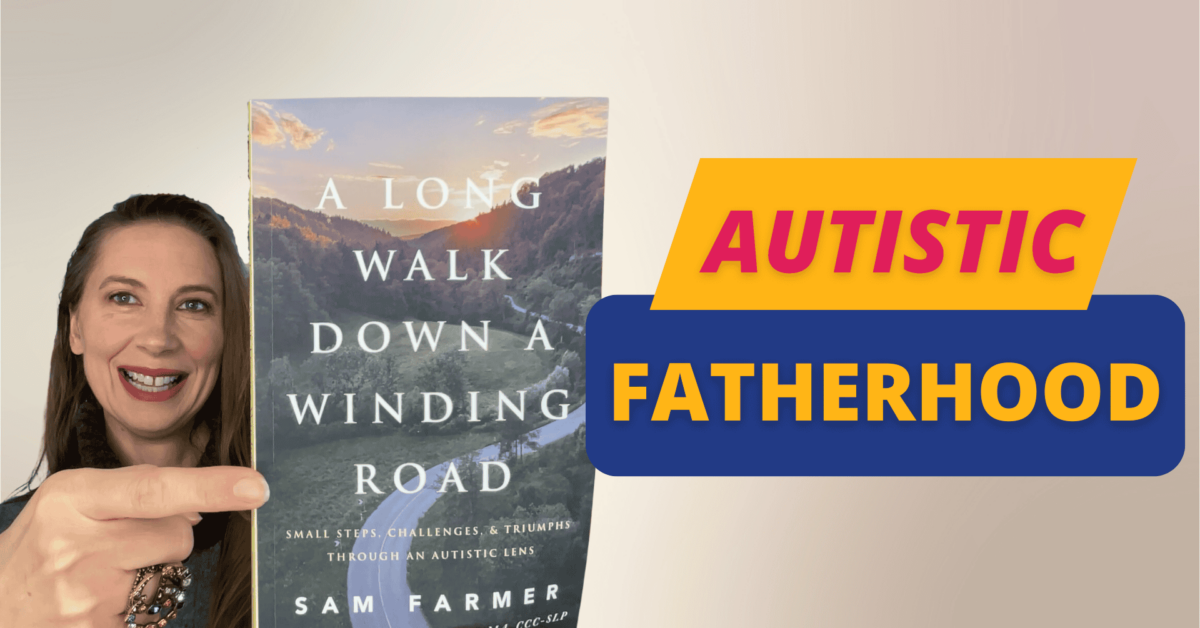It is Book Club time! And this month’s book is Qigong Massage. This was a very popular one. This book gives a great breakdown of Qigong massage and it gives specific exercises to do. It has instructions on how to make the most of this book.
Let me read a quote or two from here.
“The treatment described in this book has proven results in children with autism under six years of age. The success came from parents who were able to learn the massage, get it into the child’s routine, and give it every day for five months.”
That’s quite a bit. The book goes on to say – “As the weeks passed, the children improved. Children started to ask for their massage, and parents came to enjoy it as a close time with their child.” The technique in this book is meant for repetitive, everyday use, and at least five months or more before you really start to see a lot of the impact.
Now, you don’t have to do every single technique that’s in this book. You can pick one that really resonates with you, maybe one that is very specific to your child’s needs, and you could do that. That’s probably a bit more manageable. But if you have time to do a full-length massage, and it probably ends up being about 20 minutes, then this book is certainly interesting for you.
What is Qigong?
There’s a great description of qi, Q-I. It explains how qi is energy. Qigong is working with the energy. And the technique that they’re going over in this book is qigong sensory training. This massage is really targeting sensory issues.
This book has a great chapter two in the sense that it goes through and answers questions that you might be having. Like, “Who is the Qigong sensory training whole program? Who is it really for? Can I give a massage to my other typically developing children? Where should I do the massage? How long do I need to do the program?” I already told you that answer. Lots of different questions like, “What if I make mistakes?” It really does a good job of informing the parents about the technique and reassuring them as to whether they’re following the plan correctly.
The movements
Let’s get into some of the massages. These movements is what they call them, actually. There’s one that helps with digestion, diarrhea, or constipation. That’s definitely something that comes up in children with autism quite a bit. This is what it looks like.

You’re going to be doing a massage that’s in a circular motion on the abdomen. It breaks it down, “Have the child lay on their back, face up. What is the intention? The intention is to clear and strengthen the digestive system, watch for blocks, and be prepared to move them down the legs”.
You really want to tune into your child and get that connection because you’re trying to tune into their energy. If you feel a block in their abdomen, then you’re going to move it down their legs. This isn’t an exercise where you could check out or be watching TV and doing this at the same time. This is really where you have a heart-to-heart connection with your child.
This book, in many instances, talks about the release of emotions and giving the child space. It’s really tuning into energy. I won’t go through what the actual exercise is. I think it’s a great one. I’ve actually done it on myself.
There’s a chapter on the 12 movements and your child’s body language. This is again, it’s really learning to tune into your child and really sense their energy. It goes over questions like, “What does it mean if my child starts humming while I’m giving a massage?” That’s a very cool question. “What does it mean if my child’s hands push mine away while I am working on an area?” The answer is it means that your technique on that area does not fit his problem.
It’s creating that stronger bond between parent and child in an accessible way. There are no words being exchanged. You can really strengthen a bond in so many different ways. This is just one example. There’s another question. “What does it mean if my child is hyper after their massage?” There are really good explanations for a lot of these common questions that you might have.
Results
I’m just going to read a little excerpt here where it’s talking about parent feedback.
“So month one, the parent writes, first week, this is exhausting. Second week, I’m beginning to think I’m crazy for trying this. Third week, Am I imagining the improvement I see? Month four, my stress level is down. I’ve had a few minutes to myself and to connect with my other children and my husband. Month five, week one feels like a long time ago, and I never have to go back.”
Again, this is a long-term commitment.
Should you buy this book?
You want to do these movements for five months every day. It’s about really connecting heart to heart, energy to energy with your child. They claim to have had proven results.
I think it’s a great book. I think it presents the material well. I think you can learn how to do these movements. I don’t think you have to do all 12. There might be something very specific that you want to do with your child, and sometimes doing something very well is better than doing many things not well. I think this book really answers the question. It almost feels like there’s a teacher really with you there explaining things.
I definitely would recommend this book. I think it is very well written. This technique certainly is helpful to certain people. I wouldn’t say it’s helpful for everyone. If you’re a parent who’s stressed out and can’t get into that energetic flow at this moment, then this book certainly wouldn’t be for you. You want to get into a space where giving a massage and moving the energy is something that you’re looking forward to.





